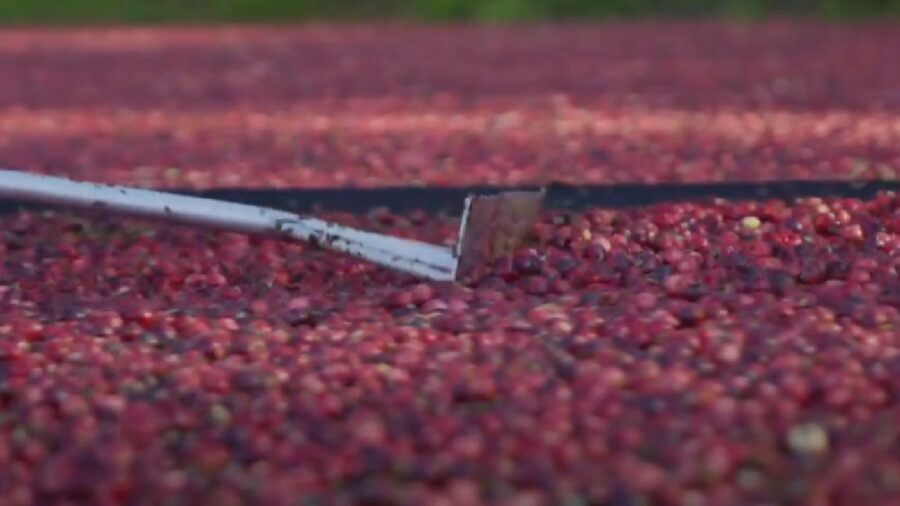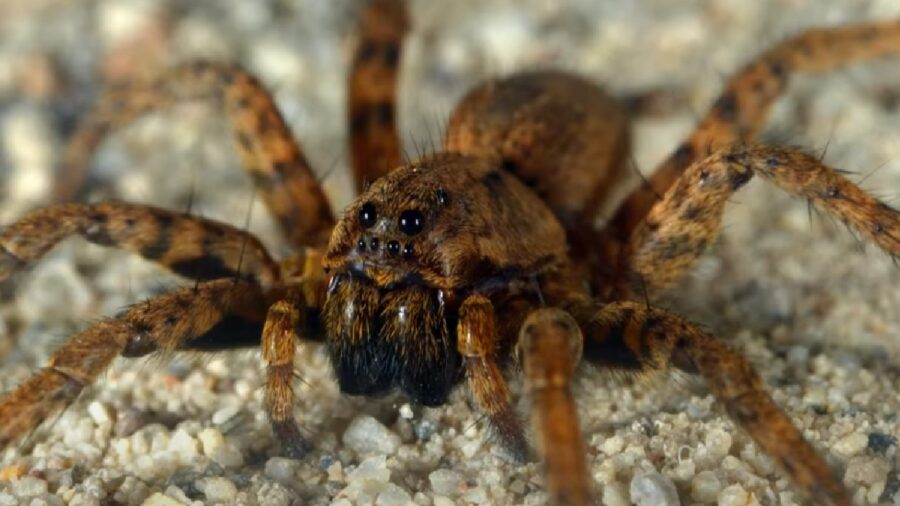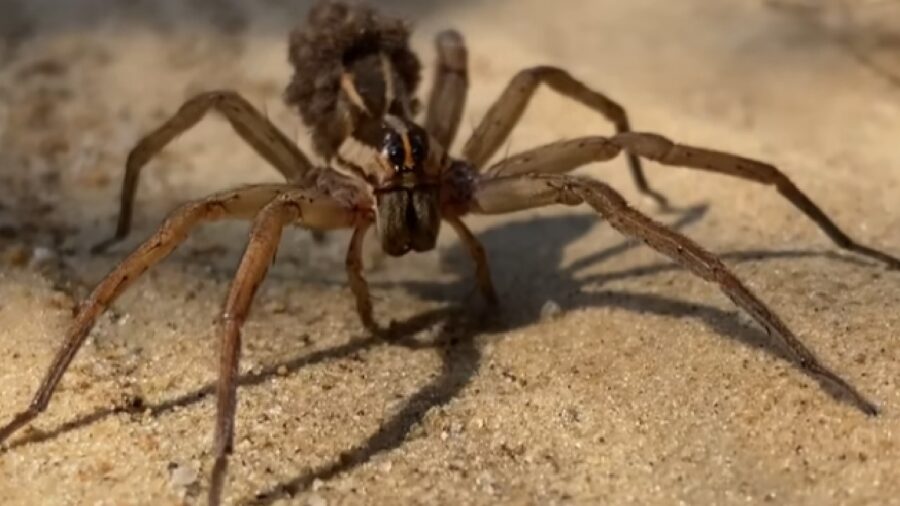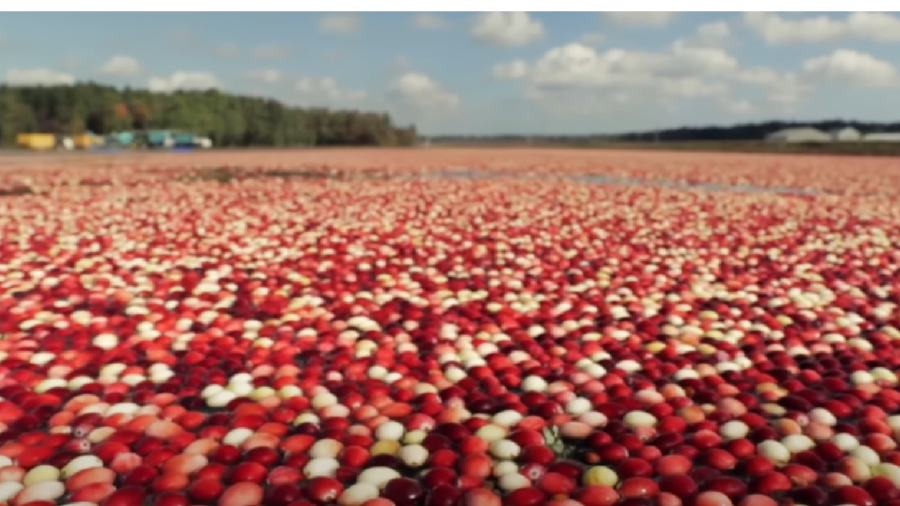Cranberry Spiders Will Make You Rethink Eating The Fruit

While many spiders spin webs to catch their prey, cranberry spiders, also known as bog spiders, can walk on the surface of the water due to surface tension or hide beneath the surface, waiting to grab unsuspecting prey passing by. These spiders aren’t just one species, but describe a variety of species that live in wetland habitats, and hunt aquatically. While they seem scary to look at, cranberry spiders actually have a symbiotic relationship with their human cranberry cultivators, eating insects that threaten the crops.
The Perfect Environment For Spiders

Cranberry harvest begins in the fall, and about 87 million barrels are gathered in the course of a year. Since cranberries grow on dry land for most of their lifecycle, a bog must be cultivated during harvest to collect the berries, attracting all kinds of wildlife, including cranberry spiders. The wet environment combined with an ample source of prey is the reason that so many spiders make cranberry bogs their home, and their presence is an indication that the surrounding environment is thriving, no matter how unnerving their presence might be.
They Can’t Harm A Human

Although the idea of cranberry spiders lurking just under the surface of a flooded bog might be unsettling, most of the spiders that live in bogs are harmless to humans. They’re usually about the size of a penny and don’t have the jaw structure or toxic venom necessary to injure a human. These spiders can be startling, especially for folks without much bog experience, but their presence shouldn’t be a reason for concern.
Different Species Of Spiders Call It Home

Cranberry spiders are actually several different species, including wolf Spiders (Lycosidae), orb-weaver spiders (Araneidae), and nursery web spiders (Pisauridae). These arachnids have evolved to live and hunt in a wetland environment, making a flooded cranberry bog perfect for their habitat. They usually hunt insects and other small creatures but hardly ever bother humans aside from surprising us when they surface unexpectedly.
Because cranberry bogs also attract insects that like to eat the berries, cranberry spiders are a great, natural pest control option. Although some bites can occur, serious harm from bog spider bites is rare. Rather, these unique hunters help to protect cranberry bogs from destructive pests like cranberry fruit worms and weevils, making them good neighbors to their cranberry bog hosts.
The Spiders Are Beneficial

While an average person might be completely overwhelmed with panic upon discovering that they are covered in spiders, cranberry bog workers routinely deal with this type of situation. Most cranberry spiders aren’t harmful to people, and because of their pest-control abilities, cranberry workers have developed a genuine fondness for the spiders, gently shaking them free of their waders after emerging from the bog. The helpful aquatic spiders might seem scary, but they’re actually quite useful and can contribute to a robust harvest.
Most Spiders Don’t Make It To The Shelves

Considering the sheer volume of spiders present in the bog, you might be fearful that the next bag of fresh cranberries you buy will be full of spiders, but there’s a washing process that ensures this won’t be the case. Cranberry spiders prefer living outdoors, so faced with the prospect of getting pulled onto a truck, most will jump ship at the first opportunity. Additionally, there are several rounds of rinsing the fruit and screening out leaves and other debris, including any remaining cranberry spiders who may have accidentally hitched a ride.













Login with Google